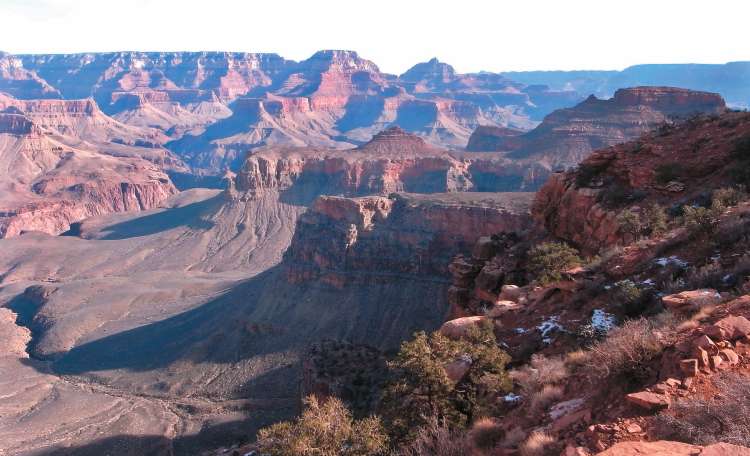British firm under attack for mining near Grand Canyon

A British mining company is at the centre of a row over uranium mining near the Grand Canyon, the great American landmark which is one of the world's most celebrated preserved areas.
US environmentalists have launched a legal challenge to permission given to the British firm Vane Minerals to drill for uranium in the Kaibab National Forest in Arizona, which borders the canyon on both north and south sides.
Last December the US Forest Service gave Vane, which is based in London but operates largely in America, the authority to drill exploration sites within the forest at several different locations.
The company is seeking commercial quantities of the radioactive element, whose price has soared in the past five years driven by the prospects of a new generation of nuclear power stations being constructed, especially in China.
Commodity speculation is thought to have pushed up the price, which has risen from around $7 per pound in 2000, to more than $100 per pound today.
Uranium therefore looks a very attractive option to mining companies, and Vane is hoping to make millions of dollars from the "pipes" or seams of the mineral it is trying to pinpoint 2,000ft below the Arizona sandstone. The nearest drilling site is three miles from the Grand Canyon, a spokeswoman for Vane said.
However, a powerful coalition of American environmentalists takes the view that to be doing this so close to the canyon, which sits inside its own national park, is entirely inappropriate, and is acting to stop it.
The Centre for Biological Diversity, the Sierra Club and the Grand Canyon Trust have filed a joint suit in the US District Court in Prescott, Arizona, claiming the government approved drilling without full environmental reviews and in so doing violated several environmental and other laws.
"Grand Canyon simply isn't the place for uranium development," said Taylor McKinnon of the Centre for Biological Diversity. "Our national treasures deserve better than the calamity of an adjacent industrial zone."
The suit claims the Forest Service violated the National Environmental Policy Act and others when it approved exploration using the least rigorous analysis available to the agency. This analysis, the environmentalists say, failed to consider the controversy attending uranium development, the significance of its proximity to the Grand Canyon, and the cumulative impacts of four other future uranium exploration projects and the potential opening of Denison Corporation's Canyon Mine – all located in the same area.
Fuelled by the fifteen-fold price increase in uranium during the past eight years, planned development has increased enormously on federal lands immediately south of the canyon. The boom provoked a unanimous resolution from the Coconino County Board of Supervisors earlier in the year opposing uranium development around the Grand Canyon – the Vane exploration specifically – and supporting congressional efforts to protect the area from development.
"Some places should be off-limits to noise, heavy- equipment traffic, drilling and potential contamination from uranium exploration and drilling," said Dave Gowdey, from the Grand Canyon Trust.
The court action follows a letter from the same groups outlining legal problems with the approval and requesting that the Forest Service withdraw it. A spokeswoman for the Kaibab National Forest said it had followed the rules in allowing the exploration.
The Vane spokeswoman said it had gone through all the correct procedures. At any site where uranium was mined, the area would be restored to its original states, she said.
Concerns about the Grand Canyon's environmental health are being aired in a new film narrated by Robert Redford – as reported in yesterday's Independent – which highlights threats to the Colorado river at the canyon's base.
Ancient and spectacular
The Grand Canyon is a colossal gorge, 277 miles long, up to 18 miles wide and more than a mile deep, cut through the rocky plateau of northern Arizona by the Colorado river. It is not the world's deepest canyon, but it is the most visually spectacular, with unparalleled panoramas from the rim, and an enormous sequence of ancient rocks exposed which record much of North America's geological history.
Until recently it was believed that the river carved out the canyon over a period of six million years. However, a study by American geologists published earlier this month in the journal Science suggested that the western half of the canyon is actually much older, and that here it took the Colorado river much longer – 17 million years – to cut its way down to the level where it flows today.
The eastern half is believed to have developed separately, and it was six million years ago that the two were joined by the action of the river.
Join our commenting forum
Join thought-provoking conversations, follow other Independent readers and see their replies
Comments